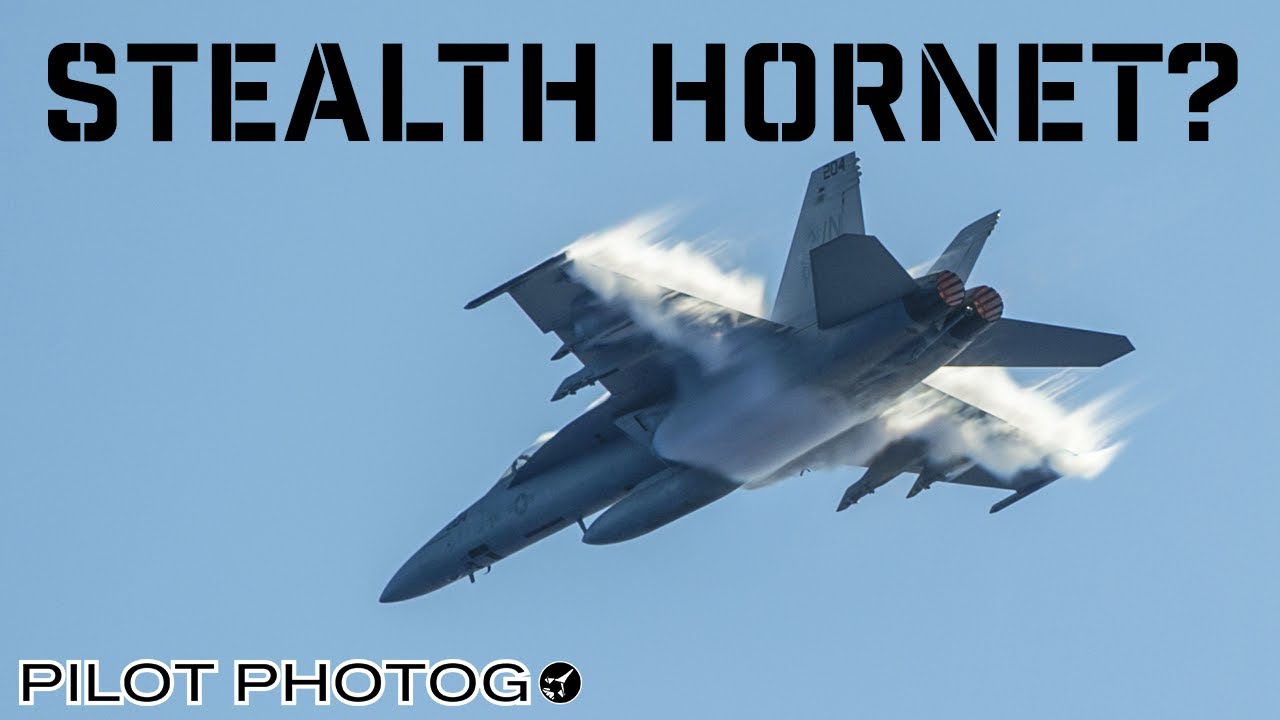Unlocking The Secrets Of The Super Hornet: Why The F-18 Is Way Stealthier Than You Thought
Unleash Your Creative Genius with MuseMind: Your AI-Powered Content Creation Copilot. Try now! 🚀
Ah, the Boeing FA-18 Super Hornet, a true legend of the skies. It's a versatile beast that dons many hats - from a fighter to an attack aircraft, reconnaissance to refueling tanker, this workhorse of the Navy does it all. But here's the kicker: it's stealthier than you might think. No, it's not quite an F-35 or F-22 in terms of stealth, but let's delve into the secrets that make this Super Hornet a surprise stealth performer.
Stealth in the Details
The Super Hornet is a master of disguise, reducing its radar signature with an arsenal of clever design elements. This isn't your run-of-the-mill aircraft; it's been optimized to outwit radar. A closer look reveals meticulous attention to detail. Every panel joint, serration, and edge alignment has been carefully managed. Unnecessary surface gaps and cavities? They're gone. Even during the frenetic pace of carrier operations, stealth is a priority.
But there's more. The Super Hornet doesn't just stop at panels; its air intakes have a stealth secret. S-shaped ducts ingeniously conceal fan blades, one of the biggest culprits in radar visibility. These ducts scatter radar waves away from the aircraft's line of sight, making it a trickier target for enemy radar systems. And let's not forget the fixed intake reflecting structure, a page borrowed from the F-117 Nighthawk playbook, which keeps radar waves away from those whirring fan blades.
All these features and more have been integrated into the Super Hornet's advanced version, known as the Block 3 Series. But here's the real kicker – this Super Hornet can carry external stores while maintaining its stealth. Enclosed weapon pods with sleek design reduce the radar cross-section further, showcasing the dedication to stealth evolution.
The Super Hornet's Sting: Detecting Stealth Fighters
Now, for the thrilling part. What's the use of stealth if you can't make the enemy pay? The Super Hornet goes above and beyond in its quest to detect and track those elusive fifth-generation stealth fighters. It's a game of cat and mouse, but this cat's got some impressive new toys.
First, enter the Infrared Search and Track (IRST) pods. Mounted on the Block 3 Hornets, these sensors can spot gliders, F-117s, B-2s, F-22s, and F-35s – all from miles away. But here's the twist – they work even when those stealthy foes are approaching from the front. It's like the Super Hornet's very own stealth equalizer.
Now, let's talk brainpower. The Distributed Targeting Processor Networked (DTP-N) computer takes center stage. It's a processing powerhouse, said to have 17 times the processing muscle compared to its predecessors. With real-time machine learning algorithms on board, it identifies new threats, cataloging them for friendly aircraft to use.
But the party doesn't end there. The High-Speed, High-Bandwidth, High-Throughput, Anti-Jam Internet Protocol-based Tactical Targeting Network Technology (TTNT Datalink) takes it up a notch. It brings fifth-generation communication and sensor fusion to the Super Hornet, making it smarter and more connected.
When these three elements join forces, a pair of Block 3 Super Hornets can detect, track, and lock onto enemy stealth aircraft, all while remaining outside the stealth aircraft's detection zone. It's a deadly dance of technology, where stealth meets the Super Hornet's incredible detection prowess.
The Future of Stealth
As if that weren't enough, the Super Hornet continues to evolve. New gallium nitride-based radars are in the mix, running cooler and reaching farther, thanks to increased electrical power. The Block 3 upgrades, along with these radars, promise an even greater striking power and detection range.
Moreover, structural changes have been incorporated, granting the Super Hornet a planned service life of 10,000 hours. This ensures that the Super Hornet remains a formidable player in the aviation world for decades to come.
So, next time you see a Boeing FA-18 Super Hornet, don't underestimate its stealth capabilities. It's not just a multi-role tactical aircraft; it's a stealthy hunter in disguise, ready to unleash its stingers against the best of them.
In the world of aviation, where stealth meets strategy, the Super Hornet proves that it's not just a workhorse but a cunning predator, ready to pounce on its prey while remaining hidden in plain sight. Who said legends couldn't be mysterious and deadly?

Related Recaps
- How I Got into Hockey and the ways you could too!
- Chip Roy Issues Fiery Warning About Biden's $6.8 Trillion Budget: 'He's Going To Level This Country'
- Como oposição fiscalizará as pautas agro no governo Lula? Evair de Melo responde | PRÓS E CONTRAS
- നാ റിയൽ ഖന്ന | Honey Bunny Ka Jholmaal | Full Episode In Malayalam | Videos For Kids
- THE ONE WHO STOLE MY HEART Official Trailer - Nollywood movies 2023